
Longread
Climate change
It’s one of the most discussed topics on the international agenda: climate change. A subject that concerns us all and affects many other issues such as peace and security, health, food safety and biodiversity. So it sounds very familiar – but climate change and its consequences are still quite difficult to fully understand. The climate is a very complex system with lots of processes that react with each other and many people don’t really feel it’s happening on their doorstep. All this makes it difficult to counteract climate change and deal with its effects – and involve the wider public.
At Wageningen University & Research (WUR), we’re working on this entire knowledge chain, raising awareness, helping to create policy and defining specific measures. We’re doing this from different perspectives, from meteorology and soil science to policy and social sciences. We’re also looking for links with other parties at home and abroad, such as educational institutions, companies and governments, to work together towards a climate-resistant world.
Cause and effect
CO2 record
The phenomenon of climate change is nothing new. As long as the Earth’s been turning it’s had periods of warming up, cooling down and changing weather patterns. But ever since the industrial revolution – and according to some people even a few centuries before that – there’s been an extra factor contributing to climate change: people. The burning of fossil fuels, deforestation, decimation of marshland and large-scale cattle farming have dramatically increased the levels of greenhouse gases in the atmosphere. The air now contains around 40% more carbon dioxide (CO2) than a couple of centuries ago – a record level for the last 800,000 years. Methane, which is released through agriculture and from land being drained for farming, is another greenhouse gas with a much-increased concentration. The more of these gases there are in the atmosphere, the longer the earth retains its heat from the sun.
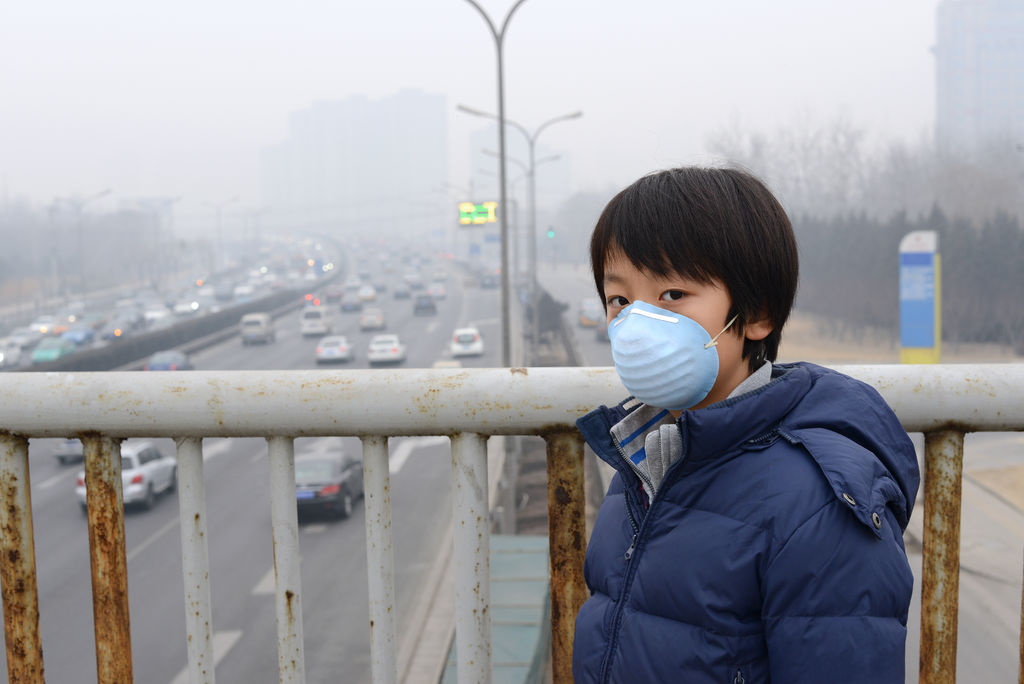
All of this has an impact on temperature and weather patterns. The temperature is now 0.9°C warmer than in 1900 on average worldwide. In some places, for example in the polar regions, it’s four times that number. The effects are already noticeable in many places. Glaciers and ice caps are melting and getting smaller, which raises the sea levels – a 25 to 80 cm increase is expected over the coming century. The tundra is sinking because the permafrost – the permanently frozen underground – is starting to melt too. Many areas are becoming drier, which is causing more forest fires, and others are getting wetter, because there’s more precipitation or rivers are breaking their banks more often.
The climate in the Netherlands has changed over the last century, too. It’s 1.7°C warmer on average. We’re having almost 20 extra summer days every year, and losing the equivalent number of frosty days. Annual rainfall has increased by over 20%, mainly as a result of heavier showers.
More extremes
Meteorologists think that weather patterns will continue to become more extreme in general. Heat waves, rain showers, hurricanes and periods of drought will probably become more frequent and more pronounced. If greenhouse gas emissions don’t decline, it will be some 2.6 to 4.8°C warmer in 2100 than it was at the turn of the last century. Even if we were to stop CO2 emissions immediately, the earth would still be 0.3 to 1.7°C warmer.
This heating up reinforces itself in various ways. Smaller ice caps reflect less sunlight than larger ones, so the earth absorbs more and more heat from the sun, and forest fires, drained marshland and melting permafrost all introduce more greenhouse gases into the atmosphere as well.
People will increasingly start to notice these effects, particularly in developing countries. Coastal areas and river deltas will see more and more flooding. Dry areas will suffer more shortages of food and drinking water. There will be more forest fires and deserts will grow in size. And plants and animals will lose their natural habitat, which will take its toll on agriculture and fishing.
Possible measures
The United Nations Framework Convention on Climate Change (UNFCCC) was established in 1992, with countries agreeing to make efforts to limit climate change to a minimum. The treaty has been regularly refined and expanded ever since, with its latest milestone being the Paris Agreement, signed by 174 countries in April 2016. They agree that the temperature will increase by a maximum of 2⁰C this century and preferably no more than 1.5⁰C, and are taking voluntary measures to achieve this. Whether or not these measures are working sufficiently is evaluated every five years.
Science is an important aspect of the UNFCCC process. The International Panel on Climate Change (IPCC) regularly asks hundreds of reputable scientists from all over the world to analyse the current situation. What do we know about the causes of climate change and the complex ‘climate’ system? What do we know about possible effects and what are promising measures?
These measures fall under two categories. Firstly, there are so-called mitigation measures, which serve to remove the causes of climate change, for example by limiting the use of fossil fuels, stopping deforestation and planting new forests. Secondly, there are adaptation measures: adapting to cope with the effects of climate change as much as possible, for example by raising dikes and improving rain water drainage.
- Unfortunately, your cookie settings do not allow videos to be displayed. - check your settings
Science at the basis
Mitigation and adaptation: both types of measures are necessary – and both need good scientific substantiation. Only then can they really be effective. ‘Scientists are working all over the world to contribute to this,’ explains Rik Leemans, Professor of Environmental Systems Analysis, ‘with knowledge about how climate change works, but also how human systems respond to it. We’re very strong in this combination at Wageningen University & Research.’
His specialist subject, system analysis, looks at climate change in relation to other big environmental problems such as pollution and the decline of biodiversity. ‘It doesn’t make any sense to study them separately,’ says Leemans, ‘because they influence each other. So we look at the entire chain to work out what the causes, processes and effects are, as well as the practical solutions.’
Services
His research group has already contributed a number of important studies to the work being done by UN panels on climate (the Intergovernmental Panel on Climate Change, IPCC) and biodiversity (the Intergovernmental Platform on Biodiversity and Ecosystem Services, IPBES). ‘Ecosystem services’ are the benefits that we find in ecosystems, for example in the form of food, raw materials and clean water, but also recreation and cultural identity. ‘And pollination, for example,’ says Leemans. ‘Many people don’t stop to think about it, but a large proportion of our crops rely on bees and other insects. If we lose these, for example as a result of pesticides or climate change, there will be huge economic consequences.’
Leemans and his colleagues are charting how biodiversity is changing under the influence of climate change, among other things. ‘The challenge is to estimate the value of this biodiversity,’ he explains, ‘so that you can include it in your calculations. This enables you to be very specific in demonstrating the value of protecting ecosystems.’
Objective measurement
It’s not just the reports from the IPBES, but also those from the IPCC, that provide an analysis of the system. ‘They include scenarios for climate change,’ says Leemans, ‘and what effects they have on ecosystems. The graphs clearly show how vulnerable we really are. And they show where the 2⁰C objective from the Paris Agreement comes from; it hasn’t simply been plucked out of thin air.’
For Leemans, it’s as clear as daylight: the science behind climate discussions is cast-iron strong. ‘Some people say other things sometimes,’ he explains, ‘but only with nonsense arguments. Many so-called experts talk about certain aspects out of context, but the things we’re looking at can be measured and explained objectively.’
He believes the main challenge now is to convert all this work into policy and specific measures. ‘It’s actually up to the politicians now,’ he says, ‘but in the meantime we’re of course continuing to gain new knowledge, not just in natural science, but also on economic, social and policy fronts. There are only three or four places in the world where this happens, and we’re one of them. This systematic approach is WUR’s strength.’
Knowledge is power
A tree on the Wageningen University & Research campus has been active on Twitter since May 2017. This 30-year-old poplar is keeping its followers informed about its sap flow and secondary growth via @TreeWatchWur. But why are we interested in this information? Trees are a vital aspect of our climate. Most importantly, they absorb the greenhouse gas CO2 to promote their own growth, and this CO2 remains stored in their wood. A mixed forest consisting partly of younger trees is particularly capable of absorbing and storing large amounts of CO2. Trees also protect the soil against heavy rainfall, helping with water retention and preventing soil erosion.
- Unfortunately, your cookie settings do not allow videos to be displayed. - check your settings
Extreme weather
Climate change means Europe has to cope with weather extremes such as drought, heat, unexpected frost and flooding. According to Wageningen University & Research tree biologist Ute Sass-Klaassen, ‘We need to assess what this means for the growth and vitality of our trees. If a tree does not get sufficient water as a result of prolonged drought, for example, the tree will suffer from stress. This hampers its CO2 absorption and so also its growth. This growth retardation leaves marks in the tree’s wood, so it acts as an archive that stores the experience of stress in the tree’s annual growth rings. We want to find the key to unlock the information contained in these annual growth rings.’
Annual growth rings
Annual growth rings are the broad and thin lines visible on tree stumps. They are shaped by environmental factors throughout the year and can be seen as a type of weather archive. If the conditions are right, the tree will grow quickly and create large cells, while in poor conditions the tree will produce smaller cells. This gives each annual growth ring its own specific pattern.
For example, the size of the xylem vessels shows whether the trunk of a tree has stood in water. While conducting research on oak trees along the IJssel river in Deventer, researchers from Wageningen University & Research discovered that if, during the start of the growing season, an oak trunk stands in water, many smaller vessel elements are formed. But this only occurred in the part of the trunk that was covered by water. In the higher trunk segments that weren’t in the water, the vessel elements were normal in size.
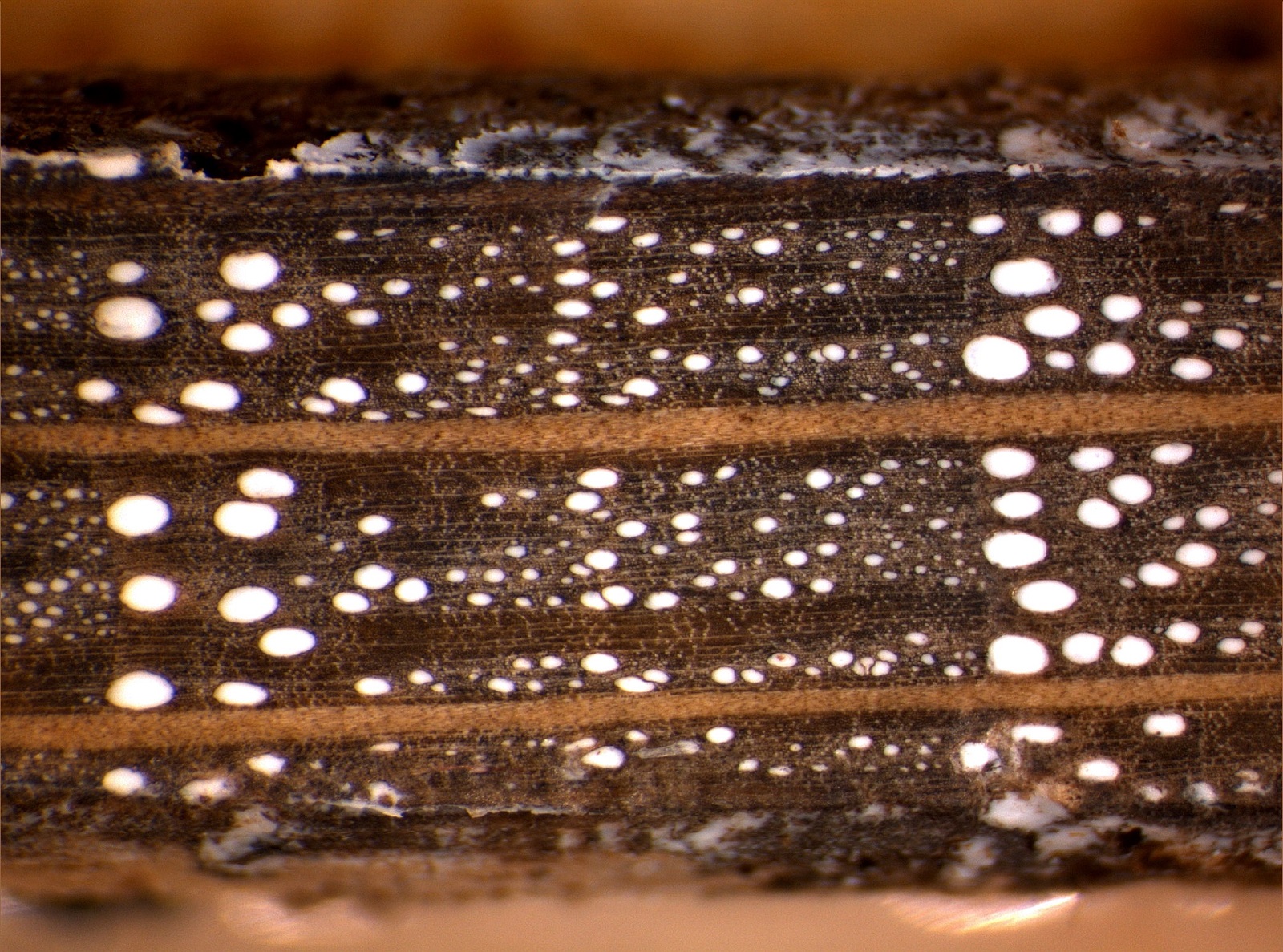
The secret lives of trees
Several trees across western Europe have been fitted with measuring equipment to track the precise formation of wood structures in extreme weather conditions such as drought. It continuously measures the speed at which a tree transports water and how the diameter of the tree trunk changes.
The unique thing about this research is that the trees fitted with the measuring equipment tweet about their data. On 5 June 2017, a bright and sunny day, the tree on Wageningen University &Research campus tweeted: ‘Today I have grown 0.082 millimetres, transported 124.9 litres of water at a maximum sap flow of 9.8 litres per hour.’
Each tree also measures humidity, temperature and soil moisture levels. According to Sass-Klaassen, ‘The first results indicate that tree growth is more dynamic than we initially thought.’ By tweeting the results in real time, the broader public gets a glimpse into the inner life of trees. And during the day there’s a lot more going on than you think!
Resilient forests
Researchers can use the real-time information from the trees to develop models that help uncover how trees reacted to their environment when they were under stress in the past. ‘We can use this knowledge to design the forests of the future. It will help us select the species and varieties needed to keep European forests resilient, so they can continue to perform and strengthen their important roles in climate control and as a source of wood and other products. This is why it’s essential that funding is provided for this type of fundamental research for the preservation of our forests.’
The tweeting tree research project was initially launched by the European research network STReESS (Studying Tree Responses to extreme Events: a SynthesiS), headed by Sass-Klaassen. 350 researchers from 37 countries, representing different disciplines including ecophysiologists, tree geneticists, forest ecologists and dendrochronologists, developed a concept and vision for discovering the secret lives of trees.
Modelling
What will the world look like in the future? How will the global population and economic growth develop? Will it be ‘every country for itself’, or will we work together more? Is the gap between rich and poor growing? And what does all this mean for food safety? ‘We set up future scenarios for all these types of questions,’ explains Hans van Meijl, Business Developer at Wageningen Economic Research, ‘while we also consider the influence of climate change on all these developments.’
Van Meijl wrote a comprehensive report together with colleagues from reputable institutes in the Netherlands and abroad: Challenges of Global Agriculture in a Climate Change Context by 2050, abbreviated to AgCLIM50. This project was commissioned by the European Commission. ‘The interesting thing is that climate change affects agriculture, but on the other hand, agriculture is also one of the driving forces behind climate change,’ explains Van Meijl. ‘Agriculture, and livestock farming in particular, is responsible for 10-20% of greenhouse gas emissions. If we want to combat climate change, we therefore definitely need a comprehensive approach to dealing with agriculture.’
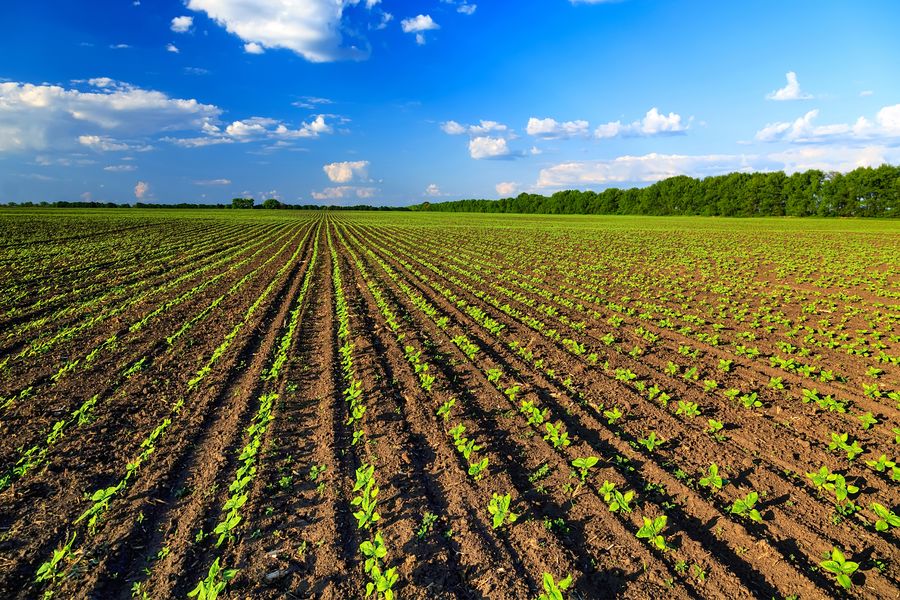
Unexpected effects
Van Meijl explains that agriculture contributes to greenhouse gas emissions but can also help to reduce emissions; plants and trees get their carbon dioxide from the air, after all. So planting forests and using biomass instead of fossil fuels are high on the agenda. ‘Measures like these can sometimes have unexpected effects, however,’ warns Van Meijl. ‘They use up scarce agricultural land and so can push up food prices, which can in turn have consequences for economic growth and food security.’
The AgCLIM50 report tries to link all these issues together in different scenarios. One of the report’s conclusions says that so-called mitigating measures (measures to remove the causes of climate change) have more of a negative effect on agricultural productivity than climate change itself. ‘So it’s very possible,’ says Van Meijl, ‘that alternative measures will make more sense. Collectively eating less meat, for example, or combating waste and making sure yield per hectare increases.’
AgCLIM50 is a model study that combines forecasts from different sources with each other. ‘We’re supplied with data from other sectors, such as climate and plant sciences,’ he explains, ‘which we use in our economic models. We also place different models next to each other to limit uncertainties to a minimum.’
Informed assessment
The uncertainties remain considerable, as he remarks. ‘If you check, you’ll find that some predictions are for the year 2100, almost 100 years away. And look at how much our world has changed over the last 50 years. There will undoubtedly still be more technological developments this century that we haven’t even dreamed of yet. How they’ll affect the global population, incomes, yield per hectare … it’s still extremely difficult to say.’
But not making any forecasts doesn’t help either. ‘Policy-makers need to have something they can work with,’ says Van Meijl. ‘What we’re doing is the most feasible course of action.’ He knows that policy-makers at all levels are using the AgCLIM50 report to analyse the effects of possible measures. ‘It helps them see what effects certain decisions can have on other policy objectives,’ he says, ‘and make a well-informed assessment.’
He remarks that this is how scientific work influences policy. ‘Science is taken seriously here in Europe. We have short lines to policy-makers, at both national and European level. We mustn’t complain.’
Mitigation
Two climate strategies are required at the same time, as researchers emphasise: we need to adapt to climate change (adaptation), but at the same time also remove the effects (mitigation). There are various ways to achieve the latter. Firstly, by limiting greenhouse gas emissions, of course. All sorts of projects have already shown that this is possible: we can use fossil fuels less, take more advantage of solar and wind power, and use more intelligent forms of bio-energy, for example from agricultural waste, manure and sewage water.
We also need to combat deforestation and the draining of marshland areas, both of which are still taking place on a large scale to make land available for the growing demand for agricultural products. At the same time, erosion, degradation and desertification are also leading to agricultural land being lost. Using existing agricultural land more intelligently, so that no new exploitation is necessary, is therefore an important aspect of climate mitigation. This could be made possible with new plant species with a higher yield, for example.
Another option is to capture and store carbon dioxide from the air, called carbon capture and storage, or CCS, in international circles. This storage doesn’t necessarily need to be underground; there are more natural methods too. Forests capture carbon as they grow, in the form of wood, so planting new forests, and the long-term storage of this biomass – for example in the form of furniture and buildings – is a serious option that many people will see in the future.
Smarter energy consumption
Greenhouse horticulture in the Netherlands accounts for around 10% of the annual natural gas consumption – and so also a substantial proportion of greenhouse gas emissions. Researchers from WUR are investigating ways to reduce this energy consumption. One option is to use LED lighting in greenhouses, which can halve energy consumption for tomato growers. Eight PhD and three post-doctoral students are researching this under the leadership of Leo Marcelis, Professor and Chair of Horticulture and Product Physiology. Technology foundation STW and ten other companies are financing the research.
- Unfortunately, your cookie settings do not allow videos to be displayed. - check your settings
Switching from high-pressure sodium to LED lights saves 25% of the energy used to convert electricity into light, and this is likely to increase to as much as 30% over the next few years. A 30% saving in electricity is also possible by positioning the LEDs intelligently, taking advantage of the different colours of light possible, providing the right intensity at the right time, and using species that are suited to energy-efficient lighting. All this can therefore lead to a 60% saving of electricity in total. And intelligent use of LED lighting can also force down the energy consumption for controlling air humidity. The fact that LEDs don’t emit much heat, however, means that farmers will have to compensate for this, so an overall energy-saving of 50% seems more likely.
Also, because LED lights don’t get hot, you can position them between tomato plants as well as above them – plants grow more efficiently when they also absorb light from the side. Marcelis and his colleagues are investigating which colours of light are most suitable in different stages of growth. It is of course important for the farmer that the plant uses the extra energy to grow fruit, and not just extra foliage, and some species of tomato react differently to light than others, so researchers are studying this too. Their results won’t just be useful for growers, but also for breeding companies.
Intelligent forestry
Approximately 13 million hectares of forest are disappearing globally every year – around 1% of the total forest area. This results in some 1.5 gigatons of extra CO2 emissions – 20% of the total emissions worldwide, and more than comes from the transport sector.
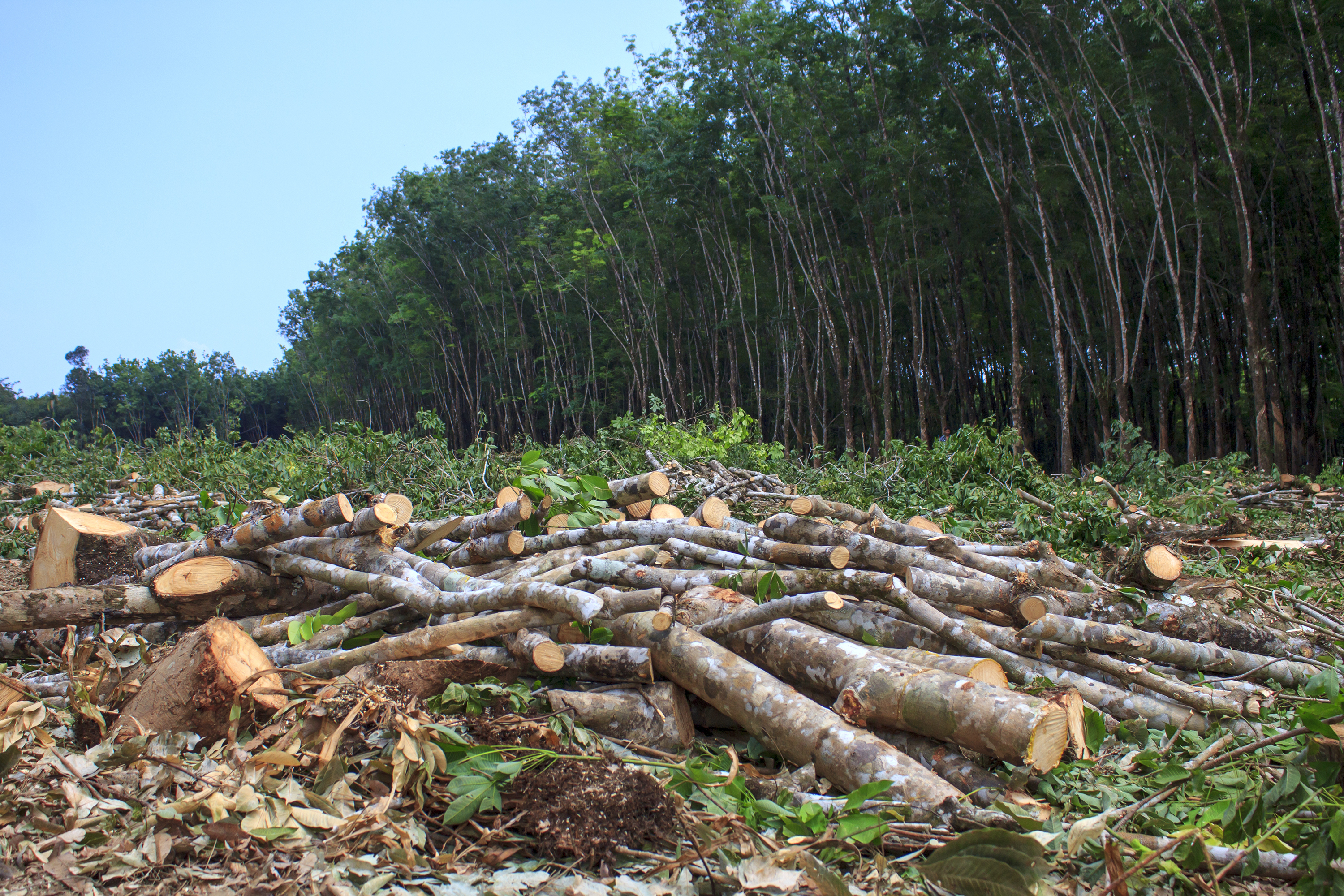
In 2008, various organisations within the UN set up a programme called REDD: Reducing Emission from Deforestation and Forest Degradation. Researchers all over the world have been working on this subject ever since. Wageningen University & Research has a large network of REDD researchers focusing on a variety of subjects: REDD policy; monitoring and reporting; forest management and climate mitigation; and ecological and social benefits of REDD.
One example of this is the research into better methods for selective forest clearing, to prevent unnecessary damage to young trees. It’s expected that this could reduce greenhouse gas emissions from deforestation by 10%. Researchers from Wageningen University & Research are also developing systems that show how the Amazon rainforest is changing as a result of climate change, and what role REDD has to play in this. They’re also studying how international policy translates into national policy and how countries are accountable for this and providing transparency.
Improving the efficiency of plants
Plant growth is the motor of life on earth. Plants use sunlight to convert water and carbon dioxide into sugar and oxygen – a process we call photosynthesis. This process provides us with food, materials and bio fuel. Likewise, plants annually extract over 250 gigatons of carbon from the atmosphere– ten times the amount of the annual carbon reduction we aim to accomplish worldwide with the Paris climate accord.
However, according to René Klein Lankhorst, programme developer at the Plant Sciences Group, photosynthesis does not achieve its full potential. 'This is especially the case in farm crops. Farm crops use merely a half per cent of the sunlight available to them. Just imagine improving this process and thus increasing the crops’ yield. It could potentially tackle various worldwide problems.
Take global food shortage. In the short term, our food production needs to be doubled in order to accommodate the growing world population. Another example is climate change. More efficient plants could extract more carbon dioxide from the atmosphere and also generate more bio fuel as an alternative to fossil fuel. In this way, plants can play a big role in mitigating the climate.'
- Unfortunately, your cookie settings do not allow videos to be displayed. - check your settings
Large consortium
Klein Lankhorst and his colleagues collaborate with over 50 laboratories in the Netherlands and abroad to prepare a large-scale EU programme, called Photosynthesis 2.0. This programme should be launched in 2021 and aims to improve photosynthesis in farm crops. But how is this done? 'First, we find out which genes influence photosynthesis,’ says Klein Lankhorst. 'We then look for advantageous variations of these genes in related species that thrive in the wild. These similar "wild" genes can be injected in the farm crops by means of conventional crop improvement or by means of new molecular techniques, such as CRISPR-Cas.'
Klein Lankhorst explains that farm crops have not yet had the chance to optimally adjust to the circumstances in which humans cultivate them. Rather, they have evolved in natural circumstances where many other qualities besides fruit yield are important. And conventional crop improvement also never focused specifically on photosynthesis. 'It was considered too complex, because photosynthesis is influenced by at least one hundred different genes,’ says Klein Lankhorst. 'We now finally possess the technology and bioinformatics to really understand this process and to optimise it.'
Klein Lankhorst emphasises that compared with farm crops, certain wild crops are up to ten times as efficient at photosynthesis. 'Desert plants, for instance, have seeds that can wait a long time for the right circumstances before they germinate. When circumstances are favourable, those plants have to grow at top speed, bloom and produce new seeds. They can only do this thanks to very efficient photosynthesis,’ says Klein Lankhorst.
The social element
Klein Lankhorst mentions the recent work on the tobacco plant as an example of a successful project. 'Just like many other plants, tobacco has a mechanism to protect its foliage against excessive sunlight. Bright sunlight thus decreases the plant's photosynthesis. Conversely, when a cloud blocks the sun, photosynthesis increases again. This shifting back and forth goes rather slowly, however. Our colleagues in America have recently discovered in which way the shifting is regulated by the plant's genes. By adding three extra genes, the shifting is speeded up, increasing the plant's produce by 30 per cent.'
The Wageningen University and Research (WUR) representatives in the Photosynthesis 2.0 programme also want to work on improving other plant properties, such as the efficient use of water and nutrients. WUR will also provide social scientists to investigate the socio-political aspects of research on plant efficiency.
Klein Lankhorst notes that 'genetic modification still meets with much opposition.' 'But in 2050 our planet will have ten billion mouths to feed. Time is running out. I would suggest using the technology at our disposal. But I would also suggest that this is done wisely and with close consideration for safety and social context. It's this interdisciplinary approach that WUR excels at.'
Adaptation
Flooding
‘Climate change is a subject that affects pretty much everywhere,’ says Tim van Hattum, Programme Leader Green Climate Solutions at Wageningen Environmental Research. ‘Issues such as food, habitability, health and air quality, for example – as well as metropolitan water management. Climate change produces extra challenges on all these fronts.’
Lots of the research at WUR is focusing on making cities ‘climate-resistant’. ‘This fits in with the national Delta Plan on Spatial Adaptation, which was set up in 2017,’ explains Van Hattum. The urgency is gradually starting to ramp up, so it’s important to take action now. He says, ‘Future climate change needs to be taken into account anywhere where building works take place, but climate considerations still aren’t included as standard in the world of construction.’
- Unfortunately, your cookie settings do not allow videos to be displayed. - check your settings
Climate Atlas
He names an example. In the Netherlands, hundreds of thousands of new homes need to be built before 2050 to keep up with demand. ‘It’s very important to look at where we build these homes,’ says Van Hattum. ‘We need to leave enough room for water storage in cities, and preserve our green areas sufficiently.’ Research at WUR, he notes, has produced a Climate Atlas: a digital tool that shows what climate change means for areas and cities in terms of flooding, drought and extreme heat, for example. ‘This Climate Atlas can serve as a basis for cities, provinces and water authorities to put climate change on the agenda,’ says Van Hattum, ‘and work on intelligent planning and solutions.’
Where we have to get to, he concludes, is ‘Water Management 2.0’: an integral method for looking at an area’s water management. ‘There will always be a certain amount of unpredictability,’ says Van Hattum, ‘because a shower can unexpectedly hit five kilometres further away than you thought. And there’s always a balance between water storage capacity and stockpiling too, which is what makes this topic so interesting. How can we combine maximum safety with water usage that’s as efficient as possible?’
Crops that withstand drought better
After drying out for 25 days, there’s not much left of the plant. The shrivelled, brownish tussock contains only 5% of its original amount of water. But a small shower can work wonders. Five days later, Xerophyta viscosa, a plant from southern Africa, is lush and green again. How is this possible? What properties make this plant so good at withstanding drought? An international team of researchers has mapped the DNA for this plant, also known as the ‘resurrection species’. The researchers from South Africa, the US, Australia and the Netherlands published their findings in the authoritative journal, Nature Plants.
Active genes
‘Knowledge about this species of “extreme” plants is very important from a social perspective,’ says Henk Hilhorst, project leader and Plant Physiologist at Wageningen University & Research. ‘Food crops that can survive this extreme drought are very important looking to the future. Climate change is causing longer and more extreme periods of drought. At the same time, we also need to provide a rapidly-growing global population with food. So plants that can survive extreme drought, such as Xerophyta viscosa, are an important source of knowledge for developing crops to withstand drought much better than our existing crops.’
In their search for the molecular and genetic background behind the ‘resurrection’, researchers analysed the DNA of the whole Xerophyta viscosa genome. They also investigated which genes became more and less active during the drying out period. The latter was the work of Maria-Cecília Costa and Mariana Artur, also employed in the Plant Physiology department with Hilhorst. Costa says, ‘To our great surprise, we didn’t find any extra gene activity, so we know that they’re active in drought-induced wilting and ageing.’
Seeds
The team did however find extra activity in genes involved in the ripening of seeds, a process in which the seeds are prepared in such a way that they can survive up to decades of drought. Costa says, ‘This could mean that Xerophyta viscosa is so good at withstanding drying out because of genes created through a process of evolution which enables the seeds to survive long dry periods.’
This information can help in the cultivation of new varieties of crops that are important for agriculture. It means the genetic knowledge of wild plants can contribute to increasing the productivity of existing agricultural crops.
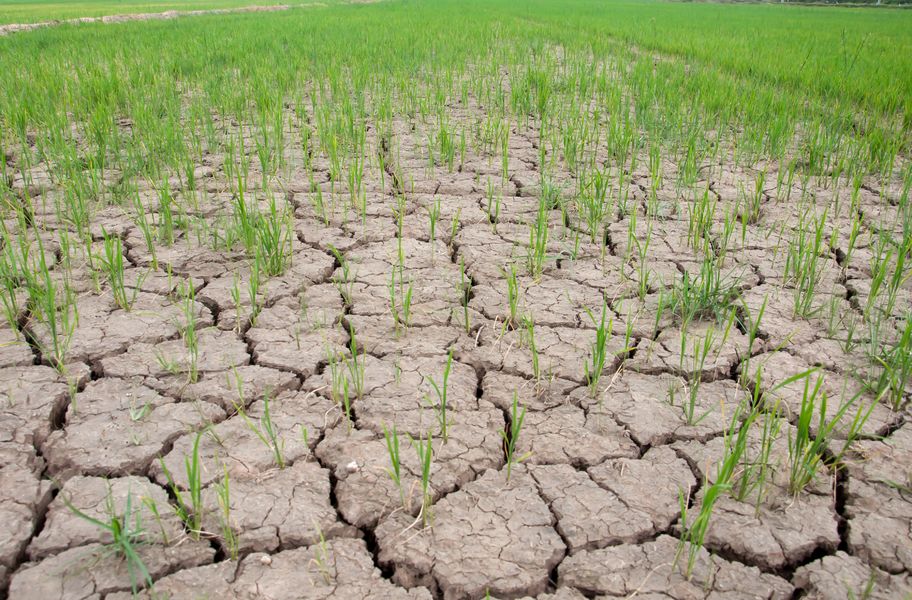
From science to policy
Much of the climate research at Wageningen University & Research is aimed at developing practical solutions. Good policy is essential if we then want to implement these solutions on a large scale, which makes environmental policy a research topic all of its own. Because how do you create good policy? How do you make sure policy is based on solid science – and that it offers something that people can really benefit from in practice? Researchers from the Social Sciences department are looking at this. One of them is Jeroen van der Heijden, Associate Professor in Environmental Policy.
Progressive
‘Now, for example, we’re working on a project that’s focusing on creating effective policy to make cities around the world more sustainable,’ he explains. ‘It’s an international project funded by NWO and the Australian Research Council.’ He has visited cities in Australia, India, Malaysia, the Netherlands, Singapore and the US for this project, researching policy programmes that encourage designers, builders, and owners and users of buildings, to voluntarily improve the sustainability of their building. ‘Either through technical solutions or more sustainable behaviour,’ explains Van der Heijden. ‘The research fits in with my long-term research into “comparative urban climate governance”, where I study which choices and circumstances collectively lead to effective metropolitan climate policy and which don’t. I’m collaborating with the Australian National University on this.’
Van der Heijden explains that the Amsterdam Climate and Energy Fund is a typical example of a climate policy programme. This is a policy instrument that encourages members of the public and companies to make buildings and infrastructure in Amsterdam more sustainable. Van der Heijden says, ‘It’s an interesting instrument because members of the public and companies aren’t obliged to achieve a certain level of sustainability such as with traditional regulations. The Fund offers financing for progressive solutions. Banks often see these types of solutions as too risky and so don’t want to finance them, but the solutions can’t be tested without it.’ The Fund is not a grant, however; the parties involved need to pay it back at market rate.
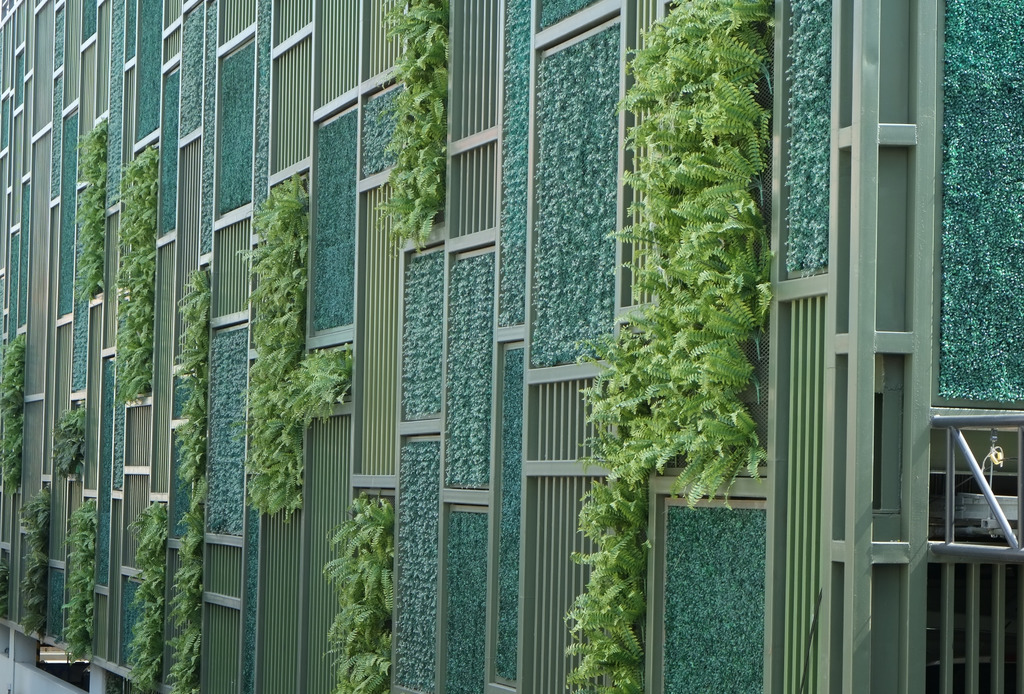
Experimenting
Research has shown that these types of programmes are mainly interesting for progressive people and companies – those who are already convinced of the need for sustainability. ‘The programmes are excellent at helping them realise their plans and ideas,’ explains Van der Heijden. ‘You’d then expect these ideas to be taken up more widely, but this doesn’t happen. I see that that these programmes often don’t succeed in attracting more than 1% of the possible participants.’
The researcher believes the solution is actually very simple. ‘I’m advocating that the qualities of these voluntary programmes are linked together with traditional legislation and regulations,’ he says. ‘Consider a system in which the legislator allows the market to experiment with solutions within voluntary programmes for a period of five years, for example, before making the best-performing solutions form the basis for new legislation and regulations. Then you can start a new five-year experimenting period for even better policy in the future. This gives managers the chance to manage while pushing stragglers forwards with proven good solutions.’
A different future
Our grandchildren’s world will look very different from the one we grew up in; that much is certain. Things that we took for granted won’t be there anymore. And vice versa: the world of the future will have solutions and adaptations that we can’t even imagine yet. All these developments are taking place at a rapid rate – and scientists are playing a major role.
They come up with technical, logistical and social solutions, and new economic and administrative models. And they closely follow how the world is changing and monitor how well solutions work. Wageningen University & Research is contributing to this research of the future together with companies, governments and the wider public. Combining different disciplines together means we can find new possibilities for a more climate-resistant world.